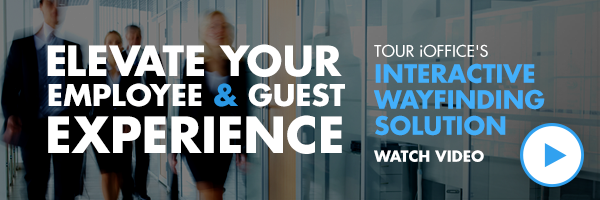5 New Services Workplace Leaders Must Provide to Survive


The unarguable truth about facilities management (FM) is this: workplace leaders will always be responsible for building efficient workspaces filled with a productive workforce. However, what has become increasingly evident is that these are not the only tasks for which the facilities leader will be responsible.

The FM space is constantly growing and evolving, which means facilities leaders must be ready to take on new responsibilities and add new hats to the ones they already wear. Here are five new services every workplace leader must provide.
 1. Risk Mitigation
1. Risk Mitigation
While there is no way to completely prevent equipment from failing or employees from making mistakes, it is the responsibility of the workplace leader to develop and implement a risk mitigation plan to minimize the impact these inevitable events have on the organization.
Facilities leaders must determine all potential risks—both expected (the breakdown of an asset) and unexpected (an employee becoming upset and intentionally damaging equipment). After identifying these risks, the facilities leaders should create a detailed plan for how to respond to and resolve each situation, including what equipment, personnel and budget may be needed to resolve the issue. This plan should also be adjusted accordingly as circumstances change over time. Finally, it is up to the facilities leader to ensure the workforce understand and adopts this plan.
2. Brand Management
How a company is run internally impacts how it is perceived externally. When customers or prospective clients visit a brand’s facility, their impression of the company will be influenced in some way by the experience they have. Were workspaces organized and clean or messy and chaotic? Did the employees seem well-trained and have positive attitudes or did they give an impression of ineptitude and show low morale? Workplace leaders must strive to protect the integrity of a brand by ensuring facilities are clean and running efficiently and the workforce is at maximum productivity.
Brand management is particularly important for a facilities leader in the retail sphere since consumers are especially finicky and quick to find fault if a retail space does not meet their expectations.
3. Strategic Consulting
Not only must today’s workplace leader ensure facilities are continuing to function at optimal levels, but he or she must also identify opportunities to improve operations across the enterprise. This could mean recommending innovative workplace technologies like an integrated workplace management system or researching the latest best practices and presenting them to the C-suite.
As a strategic consultant, the facilities leader should be on the lookout for ways to leverage the brand’s assets to support and enhance the company’s core values. The executive team will rely on the workplace leader to maximize the value of the organization’s facility assets and services.
 4. Change Management
4. Change Management
Change management is the process of preparing and supporting the workforce during periods of transition within a company, such as the reallocation of resources or the upgrade of business processes. There are dozens of catalysts for change in an organization—for example, changes in the competitive landscape, quality initiatives or mergers/acquisitions.
Successful facilities leaders are already in a good place to manage change as it requires the same personality traits to thrive in the facilities FM space, including strong communication skills, technological savviness and resourcefulness, among others. It is the responsibility of the facilities leader to ensure organizational changes disrupt the workforce’s day-to-day as little as possible and equip employees with the tools they need to successfully adapt to the new paradigm.
5. Environmental, Health and Safety Management
Environmental, health and safety (EHS) management refers to the processes a business follows to comply with federal and state-mandated environmental regulations as well as protect the health and safety of its workforce and surrounding community.
Facilities leaders tasked with EHS management are responsible for creating standard procedures in categories including:
- Energy conservation
- Waste management
- Sustainability
- Injury prevention
- Emergency preparedness
- Sustainable facility design
- Structural safety
Workplace leaders must be committed to promoting a safe and healthy environment in an organization that is focused on environmental sustainability. They should also not apply a one-size-fits-all strategy to every facility and instead adjust their approach based on the unique needs of each location.
As the role of workplace leader evolves, it is imperative for individuals in this position to expand the services they provide to meet the growing needs of their enterprise. Facilities leaders must be comfortable transitioning away from being simply service providers and begin demonstrating their value as strategic partners.
Do you know how to choose the best workplace technology for your organization? Download the free eBook, The Workplace Leader’s Playbook for New Technology, to learn how.
